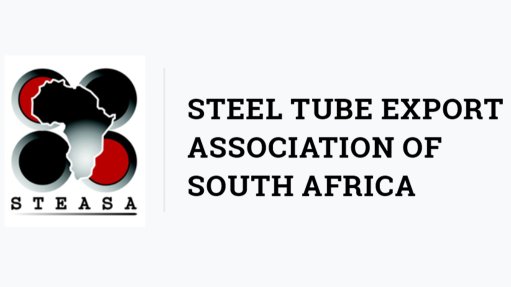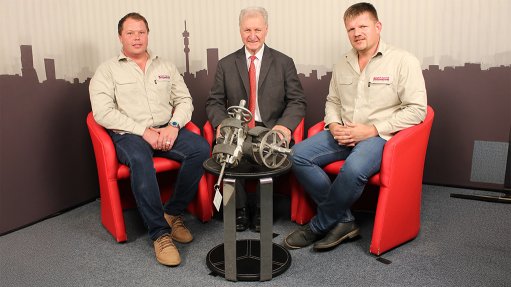Quality, training could safeguard the future of the steel sector – Institute


AMANUEL GEBREMESKEL The introduction of a quality certification programme will uplift the entire steel industry
In the face of evolving challenges within the steel industry, the Southern African Institute of Steel Construction (Saisc) is taking decisive steps to ensure the sector’s resilience and sustainability.
Specifically, amid concerns about quality and training in the steel value chain, Saisc CEO Amanuel Gebremeskel emphasises the importance of addressing these issues to safeguard the future of the downstream steel industry, which employs over half a million people.
Gebremeskel notes that quality is a pressing issue in the steel sector, particularly as the decision to keep AMSA’s long products division operational, but without firm lead-times, introduces challenges in project planning and material procurement.
With this in mind, Gebremeskel believes steel could be sourced from “anywhere and everywhere” – with importers searching for the best prices and most viable logistics. However, this, inevitably, brings up the issue of quality.
This potential diversification of steel sourcing necessitates stricter quality control measures to ensure the integrity of materials Gebremeskel adds.
To address quality concerns, the Saisc is developing a quality certification programme that aims to uphold rigorous standards throughout the steel supply chain.
This initiative, which will be rolled out in the next two years, will include the introduction of a steel quality certification brand mark or stamp, signifying adherence to high-quality standards.
Drawing inspiration from international best practices, this programme fills a significant gap in the region’s quality assurance framework, Gebremeskel notes.
“The Saisc has always recognised the dire need for quality standards monitoring and measurement for steel products and projects in the region. The introduction of a quality certification programme will uplift the entire steel industry,” he explains.
The programme will involve comprehensive training for staff at companies seeking Saisc quality certification, followed by rigorous monitoring of product and project quality by Saisc experts. This approach aligns with the instituteʼs commitment to promoting quality as a unifying factor within the industry.
Collaboration for Transformation
During an industry breakfast and steel supply panel discussion in April, attended by over 90 key stakeholders, Gebremeskel and structural engineering company Cousins Steel International (CSI) director and Saisc board member Adam Oldfield highlighted the need for greater collaboration across the steel supply chain.
Concerns regarding steel availability and sourcing have exposed deeper concerns including disconnects and the need for greater synergy between engineers, merchants and fabricators.
Gebremeskel and Oldfield emphasise the importance of fostering trust and collaboration to drive innovation in response to industry challenges.
The Saisc’s Red Book, a trusted technical resource, plays a crucial role in guiding engineers and facilitating communication between the upstream and downstream sectors.
Oldfield also underscores the need for industry professionals to have access to market intelligence that informs design decisions.
He cites an example of how CSI adapted to product delays by manufacturing columns from steel plate, showcasing the importance of innovative solutions in maintaining project timelines.
Further, as the industry faces potential seismic changes, the Saisc is calling on all stakeholders to proactively engage with the institute and participate in initiatives that bridge gaps within the supply chain.
“Our local steel industry must adopt a united approach to address the challenges posed by upstream closures. The Saisc is committed to ensuring the sustainability of the steel sector and contributing positively to the greater economy,” Gebremeskel comments.
Article Enquiry
Email Article
Save Article
Feedback
To advertise email advertising@creamermedia.co.za or click here
Comments
Press Office
Announcements
What's On
Subscribe to improve your user experience...
Option 1 (equivalent of R125 a month):
Receive a weekly copy of Creamer Media's Engineering News & Mining Weekly magazine
(print copy for those in South Africa and e-magazine for those outside of South Africa)
Receive daily email newsletters
Access to full search results
Access archive of magazine back copies
Access to Projects in Progress
Access to ONE Research Report of your choice in PDF format
Option 2 (equivalent of R375 a month):
All benefits from Option 1
PLUS
Access to Creamer Media's Research Channel Africa for ALL Research Reports, in PDF format, on various industrial and mining sectors
including Electricity; Water; Energy Transition; Hydrogen; Roads, Rail and Ports; Coal; Gold; Platinum; Battery Metals; etc.
Already a subscriber?
Forgotten your password?
Receive weekly copy of Creamer Media's Engineering News & Mining Weekly magazine (print copy for those in South Africa and e-magazine for those outside of South Africa)
➕
Recieve daily email newsletters
➕
Access to full search results
➕
Access archive of magazine back copies
➕
Access to Projects in Progress
➕
Access to ONE Research Report of your choice in PDF format
RESEARCH CHANNEL AFRICA
R4500 (equivalent of R375 a month)
SUBSCRIBEAll benefits from Option 1
➕
Access to Creamer Media's Research Channel Africa for ALL Research Reports on various industrial and mining sectors, in PDF format, including on:
Electricity
➕
Water
➕
Energy Transition
➕
Hydrogen
➕
Roads, Rail and Ports
➕
Coal
➕
Gold
➕
Platinum
➕
Battery Metals
➕
etc.
Receive all benefits from Option 1 or Option 2 delivered to numerous people at your company
➕
Multiple User names and Passwords for simultaneous log-ins
➕
Intranet integration access to all in your organisation



















